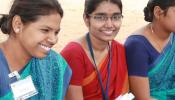The following is a special post by Laura Spencer, a Seva volunteer:
I have been privileged to work with Seva projects in Guatemala that have been developed by amazing Seva staff. The highlight so far has been Seva’s three-day eye care outreach excursion to isolated villages, reaching indigenous Guatemalans who had never received eye care services before!
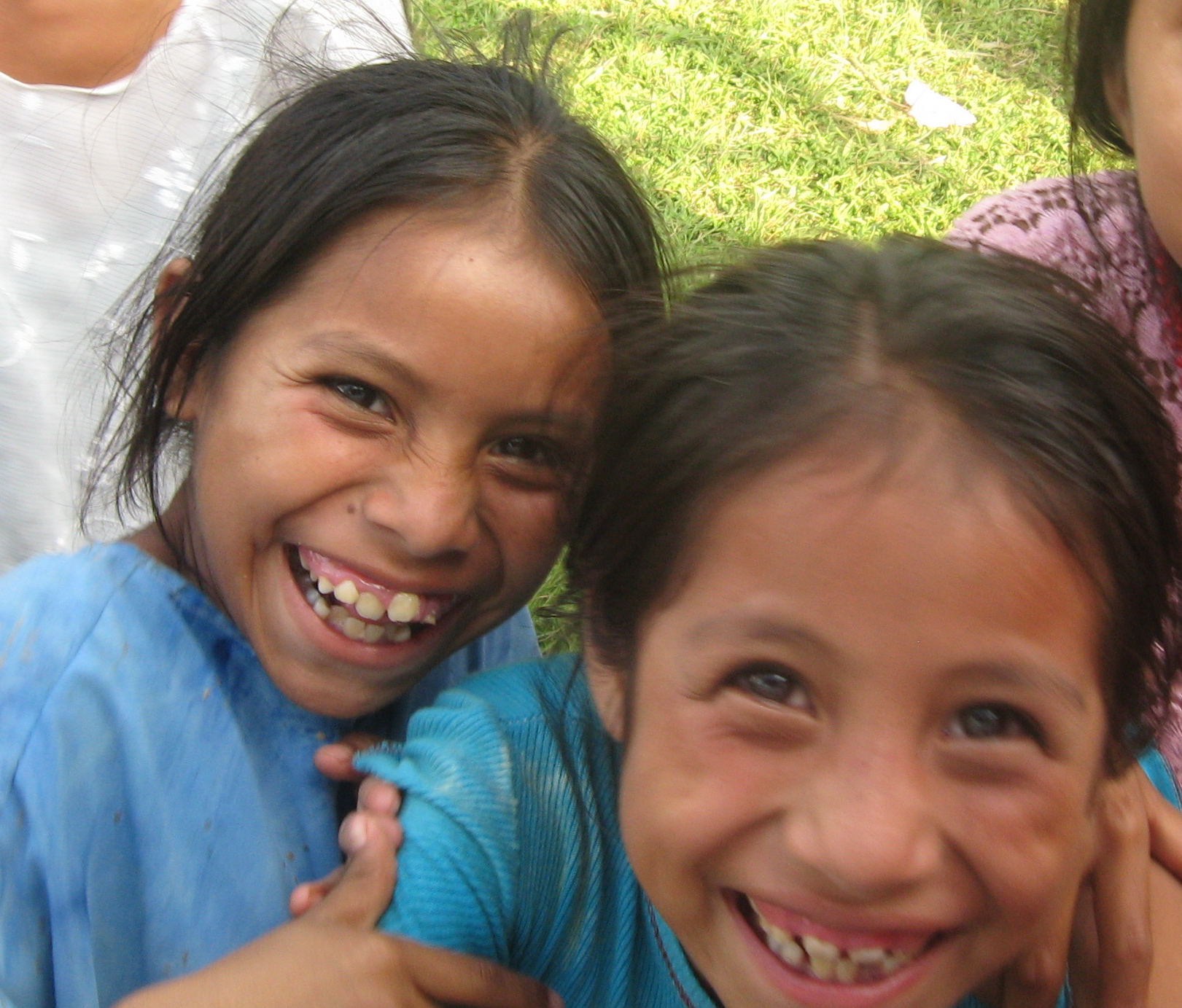
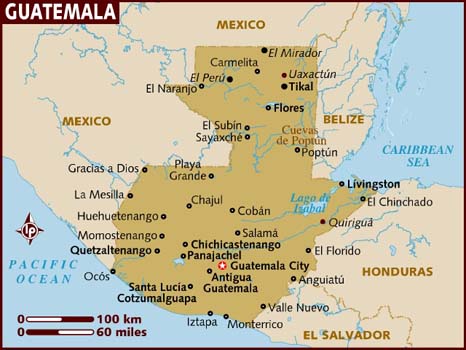 Outside of Coban, we transported ourselves and the supplies into a pick-up truck along with some local villagers. We made the slow, bumpy ride along the uneven, rocky road through mountains of corn and coffee fields to the community of Chilten.
Outside of Coban, we transported ourselves and the supplies into a pick-up truck along with some local villagers. We made the slow, bumpy ride along the uneven, rocky road through mountains of corn and coffee fields to the community of Chilten.
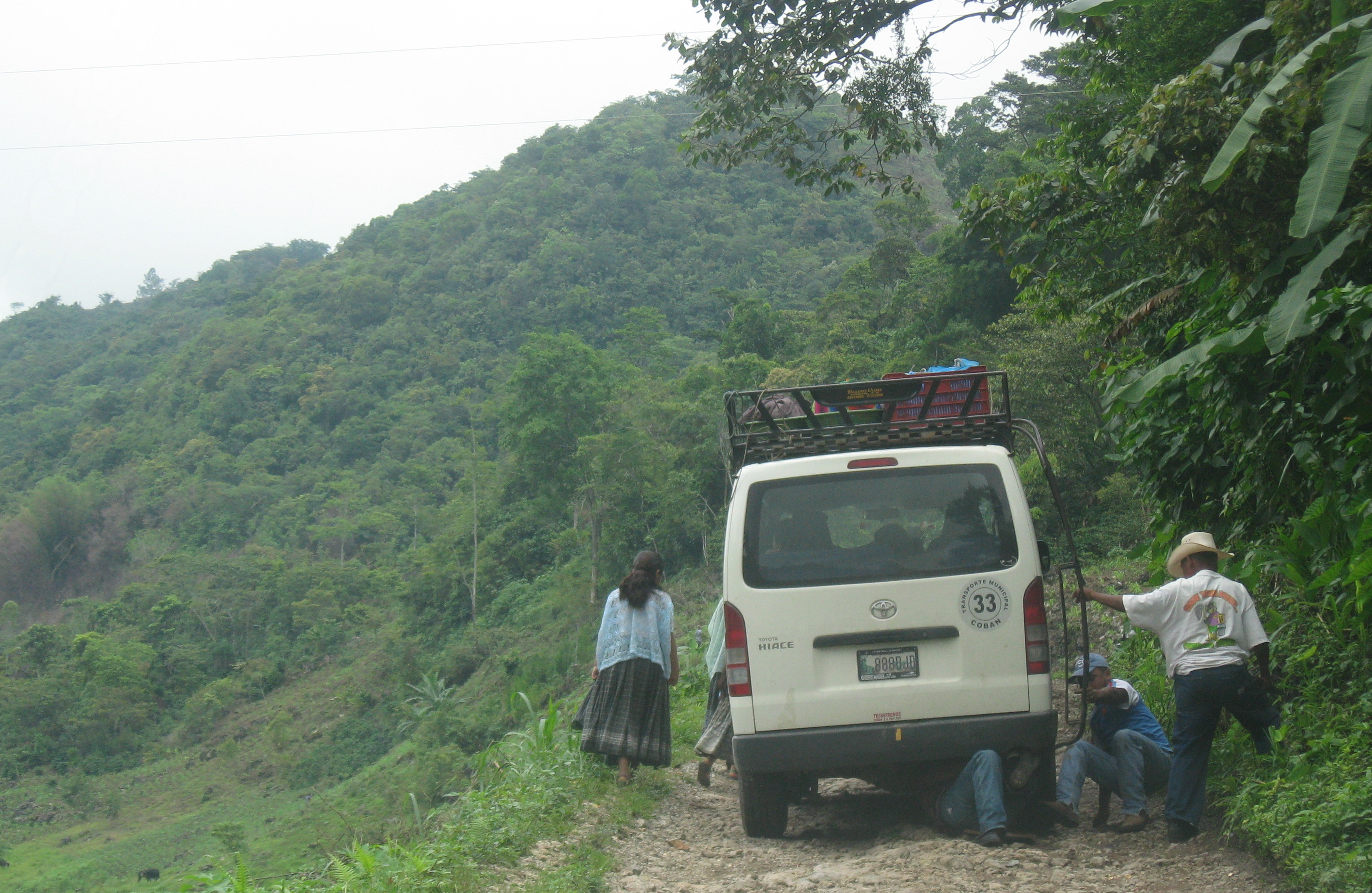 The road was long, with a broken down van on the way holding us up. The difficulty in reaching the community was a testament to the difficulty the people have in reaching services on their own. Many of them had trekked even further from Chilten, from surrounding villages even deeper in the mountains.
The road was long, with a broken down van on the way holding us up. The difficulty in reaching the community was a testament to the difficulty the people have in reaching services on their own. Many of them had trekked even further from Chilten, from surrounding villages even deeper in the mountains.
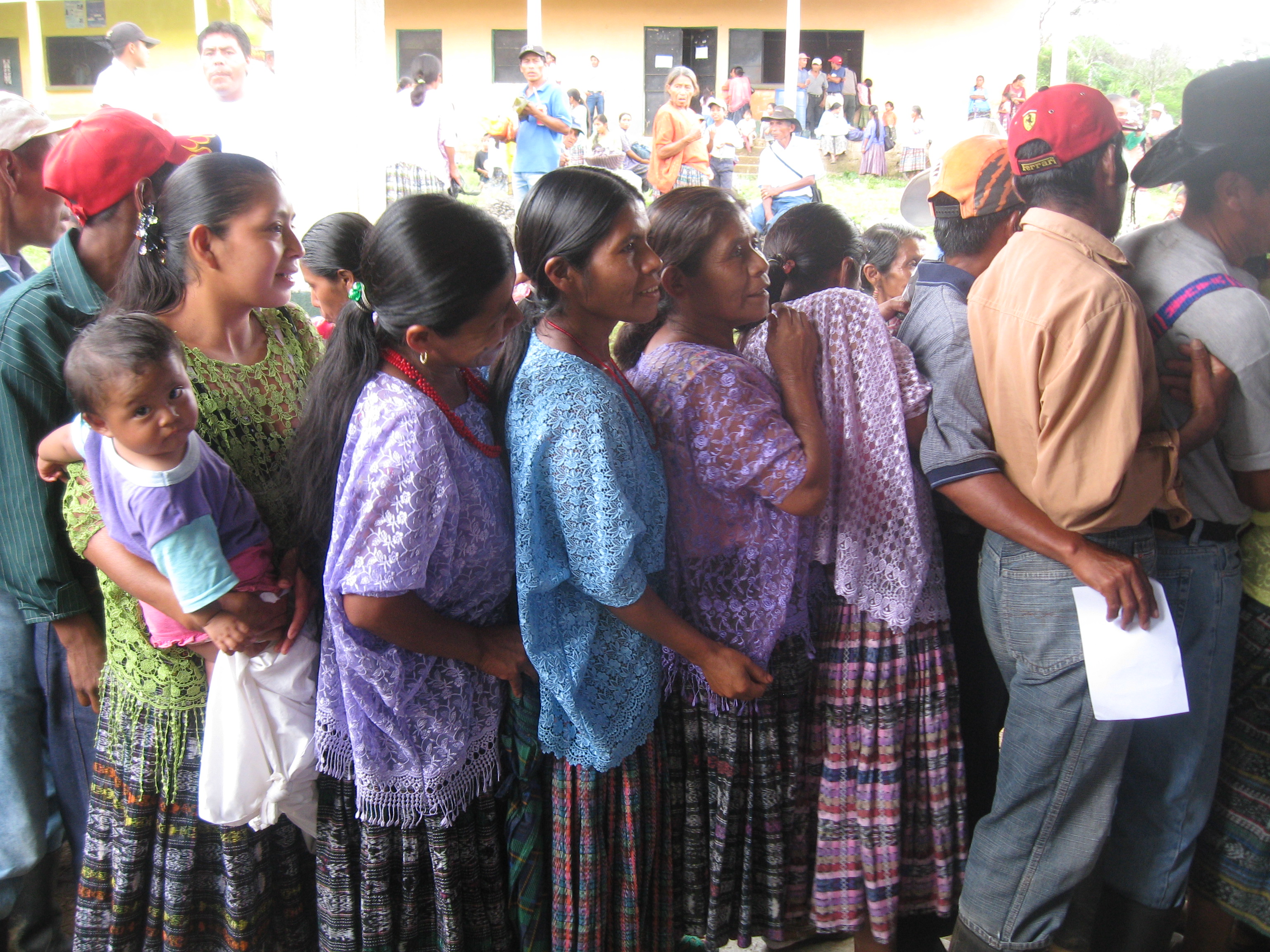
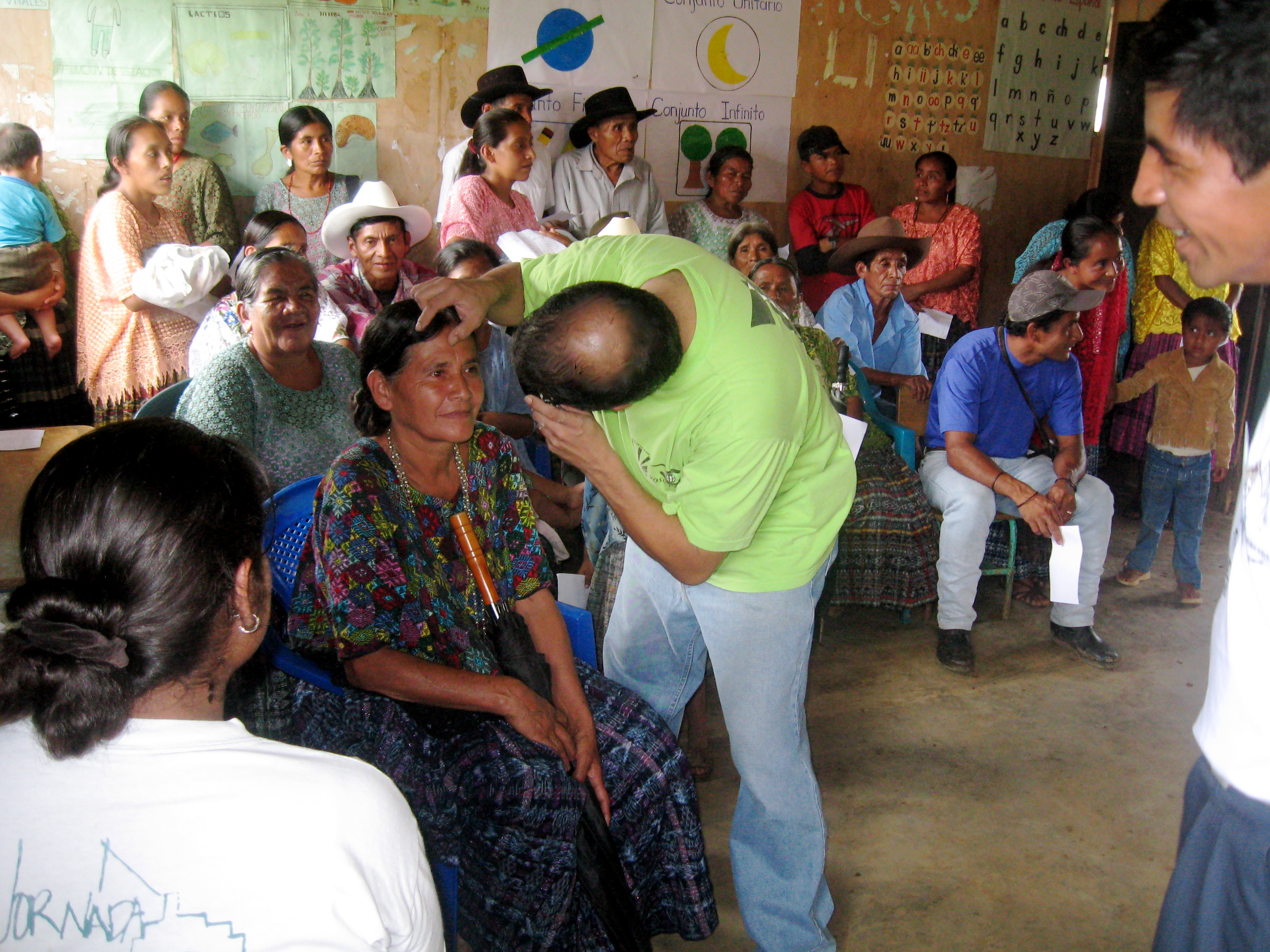
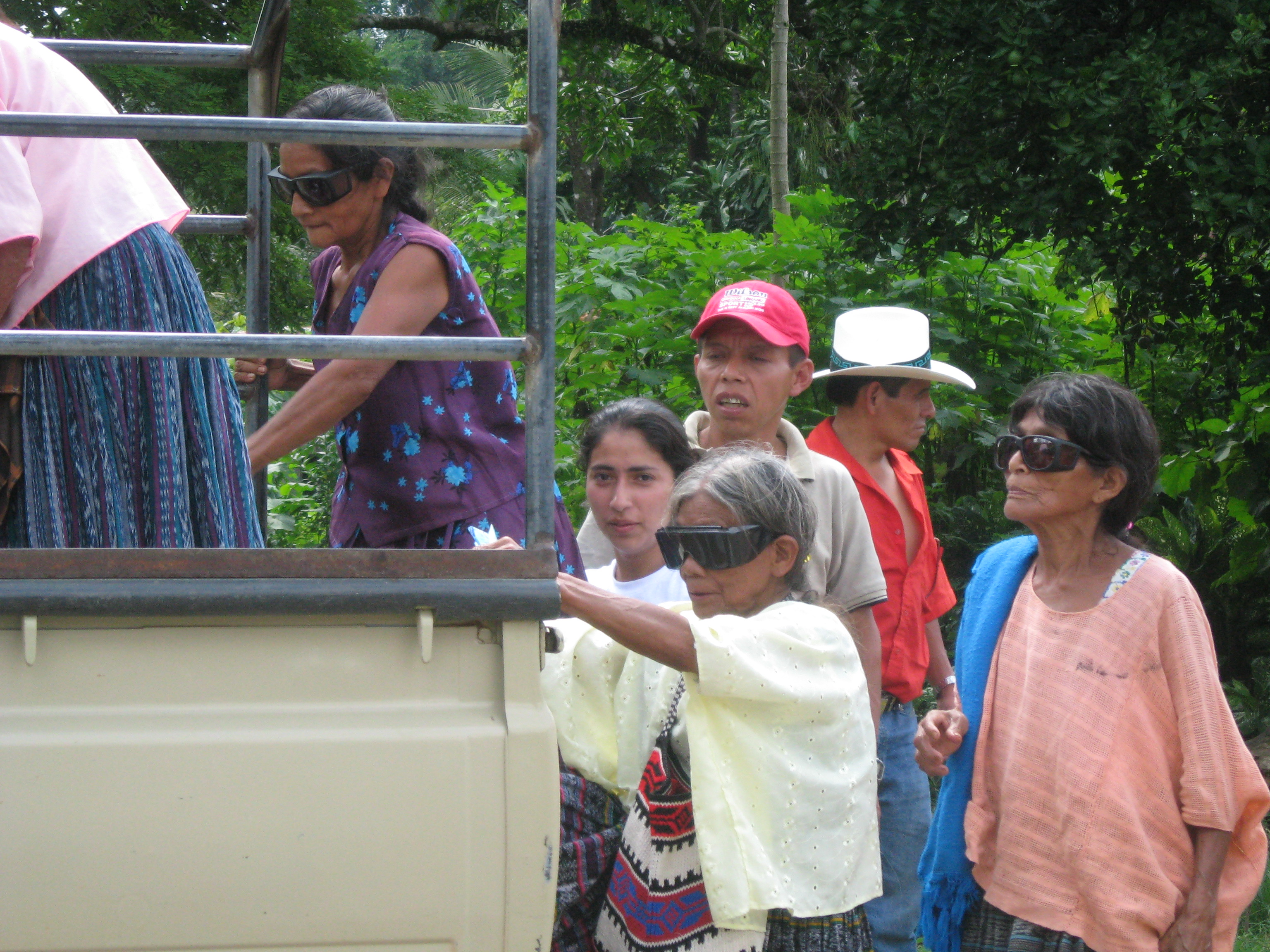
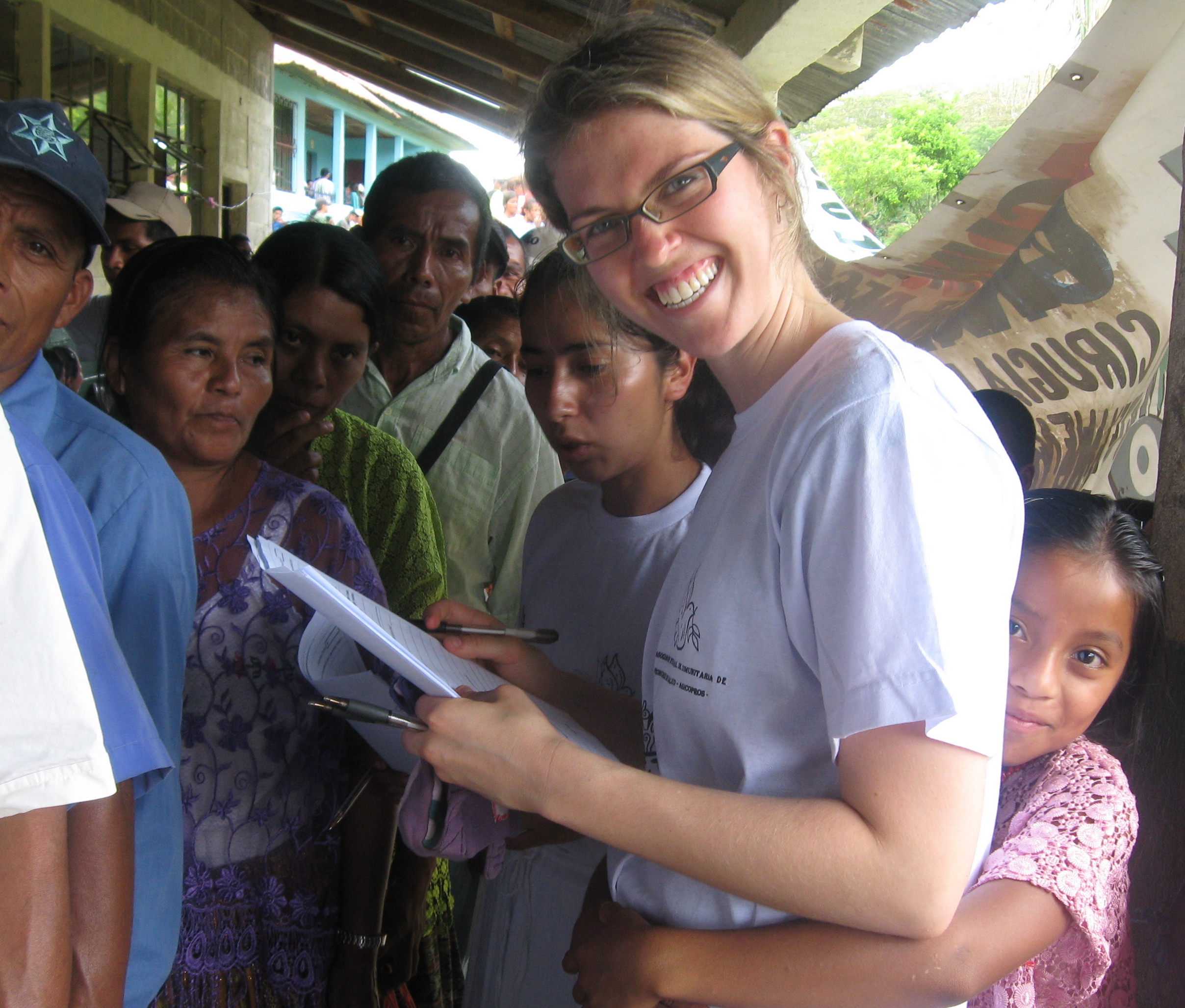
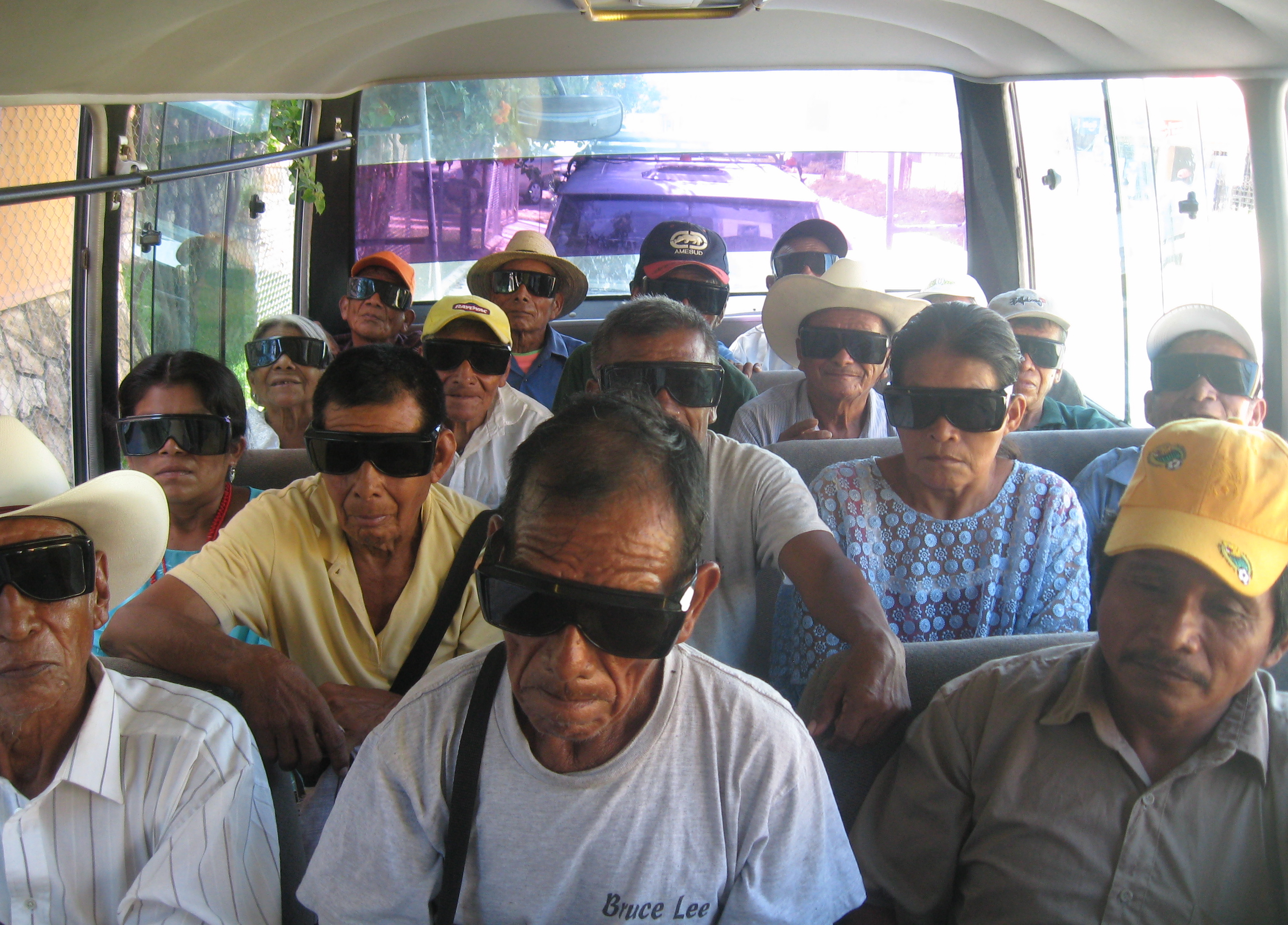
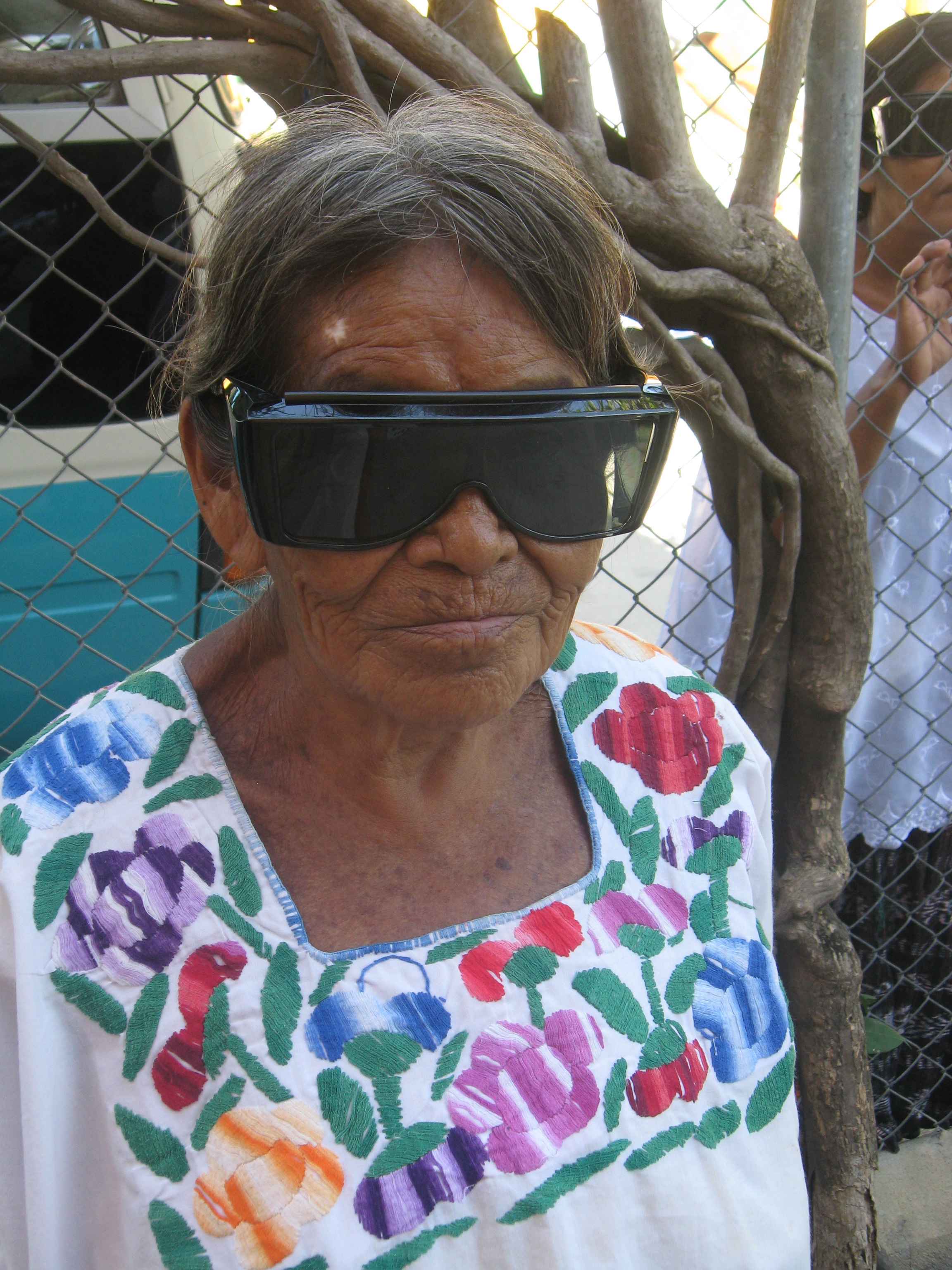

Seva eye camps - a joyful thing to witness
The three-day eye camp was funded and organized by Seva, with community development links made between the eye hospital - Vincent Pescadore in the northern region of Guatemala - and the community health promoters in various villages. A crew of six Guatemalan eye clinic workers from Vincent Pescadore and I made the journey into the hot jungles of Guatemala’s mountainous central region. We ventured off with supplies of glasses, instruments and charts. After a four-hour drive, we arrived in Coban, the nearest town. Outside of Coban, we transported ourselves and the supplies into a pick-up truck along with some local villagers. We made the slow, bumpy ride along the uneven, rocky road through mountains of corn and coffee fields to the community of Chilten.
Outside of Coban, we transported ourselves and the supplies into a pick-up truck along with some local villagers. We made the slow, bumpy ride along the uneven, rocky road through mountains of corn and coffee fields to the community of Chilten.
 The road was long, with a broken down van on the way holding us up. The difficulty in reaching the community was a testament to the difficulty the people have in reaching services on their own. Many of them had trekked even further from Chilten, from surrounding villages even deeper in the mountains.
The road was long, with a broken down van on the way holding us up. The difficulty in reaching the community was a testament to the difficulty the people have in reaching services on their own. Many of them had trekked even further from Chilten, from surrounding villages even deeper in the mountains.

Hundreds of people lining up to be seen at the 3-day Seva eye camp in the remote village of Chilten, Guatemala. Photo by Laura Spencer
An hour and a half later, we arrived! Over 500 people were waiting in line to receive eye care. Excitement was in the air! The eye camp was set up in a school and the children were given the day off. As a result, they were either getting their eyes checked or running around adding to the excitement! The organizing staff quickly set up six stations for smooth service delivery. They included an area for registration, for a visual acuity exam, a consultation with the optometrist, a meeting room for cataract patients, and another location for dispensing eye glasses.
A Guatemalan ophthalmologist examines patients at the Seva eye camp in the mountainous central region of Guatemala. Photo by Laura Spencer
For patients in need of cataract surgeries, transportation to Vincent Pescadore, food, and accommodation were free of charge. Those in need of glasses were provided with them at low cost or free of charge. It is such an amazing opportunity for these people and it was priceless for me to see the people’s faces as they went through the emotions of being offered free surgery and eye care. Seva was one of the supporters, having developed the community link between the health promoters and the hospital Vincent Pescadore. The local volunteers were an integral part of the process, acting as translators for the hundreds of indigenous people who could not speak Spanish, but the Mayan language Quechi. The first day was a great success! Thirty cataract patients were driven the 5 hours and back with free food, board and surgeries fully paid for by Seva and partners.
Cataract patients at the Seva eye camp in Guatemala being given free transportation to the hospital for surgery. Photo by Laura Spencer
My personal contribution has been conducting research for my MA on why so few rural women are taking advantage of free surgeries, as is also the case in most developing countries. With the help from volunteers with translating, I surveyed or interviewed over 80 women over the course of the weekend, collecting information regarding the barriers to service for themselves and with regard to the women in need of eye care who were not present. I also enjoyed the company of the local children who were running around the school and waiting for me to finish interviewing their mothers and grandmothers!
Interviewing Guatemalan women at the eye camp with support from a young friend!
The second and third day we drove a few hours more to another village, meeting the needs of the other surrounding communities. More free surgeries and eye care services were delivered and received. Just before leaving the last eye camp, a truckload of the first patients from two days before arrived. They were returning from the northern clinic where their surgeries were conducted by Guatemalan surgeons. Their post-operative eyes were healing behind their large, protective sunglasses. Accompanied by the community volunteers, they made their way home, with new hope for survival, with the ability to contribute to their family again and with an increased quality of life.
The first cataract patients returning from hospital after their sight-restoring surgeries. Photo by Laura Spencer
The six of us made the four-hour trip back to the northern eye clinic which is located in the largest, poorest and most secluded province of Guatemala, El Peten. Once we arrived, the patients from the same day and the others from the day before were either waiting for their surgery or waiting a day to have a post-operative examination. Whether through translation or directly in Spanish, the patients shared their fears and excited anticipation of their restored vision. I will remember well many of the patients. In particular, I will remember one man who said to me, “Vision is the most important thing. Without it, all is painful.” Another patient, an older woman in traditional dress, will remain in my memory because of her smile. She smiled throughout the whole experience, which is unusual for the culture (but she would not smile for the camera, more common for the culture!). I was honoured to see her through the whole process: from the line-up for services, the waiting room for cataract care, on the bus up to the northern clinic, before, during and after surgery, at meals in the hospital and finally to see her off as she got on the minivan back to her village.
One of 500 Guatemala patients who received eye care at the 3-day eye camp. Photo by Laura Spencer
Thank you to all the donors, sponsors and Seva staff for making this eye camp a success!
